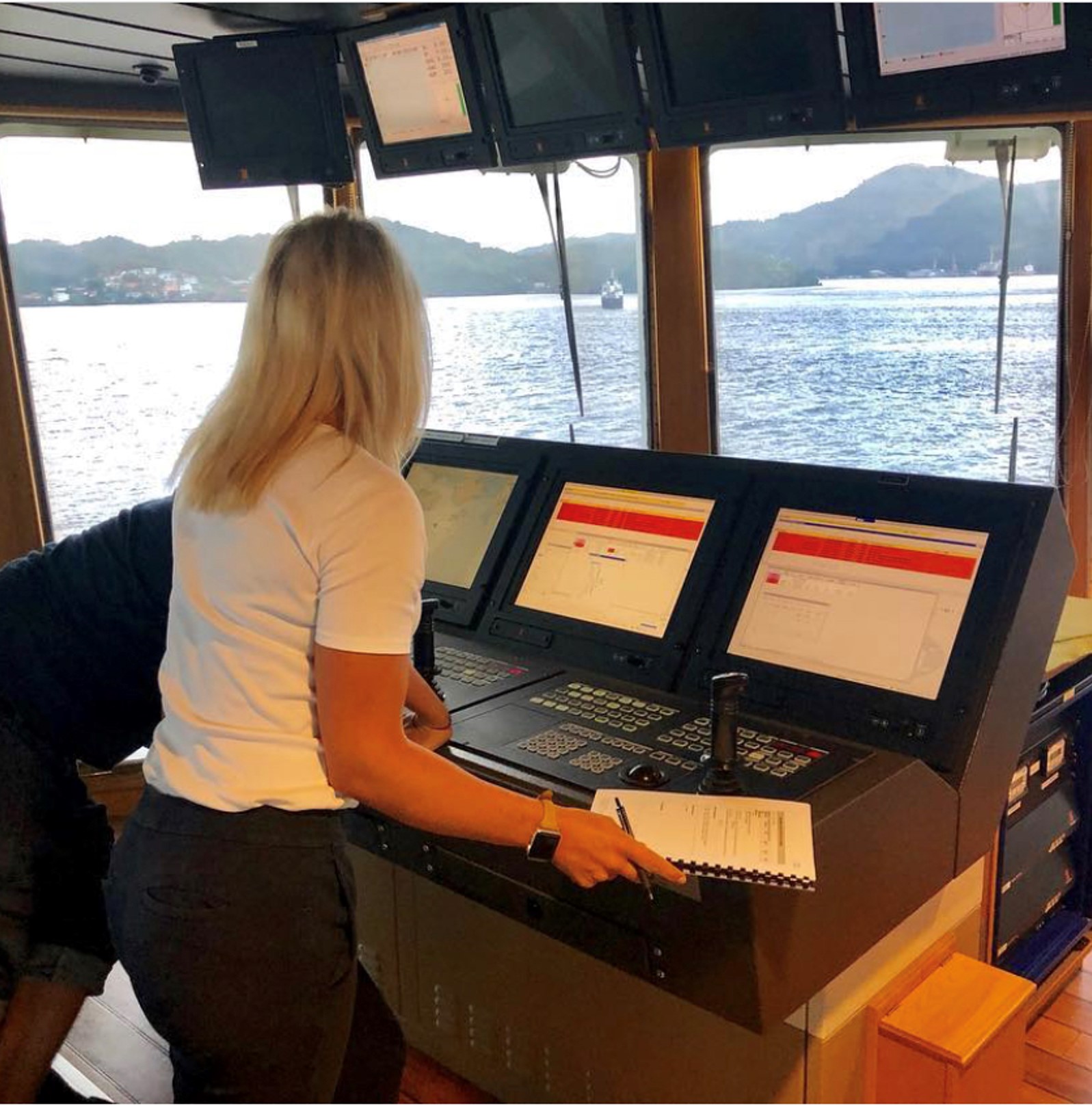Dynamic Positioning (DP) is a critical technology in modern maritime operations, particularly for vessels that must maintain a fixed position despite environmental forces at sea, such as Accommodation Vessels (AVs) connected to FPSOs. Dynamic Positioning technology employs sophisticated computer controls that help maintain a vessel’s location and position without relying on traditional anchoring or mooring methods. This advanced system leverages propulsion units, orchestrating their output based on real-time data from an array of sensors. These include Position Reference Systems for spatial awareness, Gyrocompasses for directional stability, and Environmental Sensors to account for external forces like wind, waves, and currents.
DP is essential in offshore oil and gas operations where anchoring is impractical or impossible due to water depth or seabed conditions.
DP enhances safety, efficiency, and environmental protection in challenging marine environments. By eliminating anchoring, DP reduces damage to sensitive seafloor ecosystems and allows vessels to operate in previously inaccessible areas. It also improves operational efficiency by enabling rapid repositioning and precise maneuvering, which is crucial in subsea installation or emergency response situations.
DP systems significantly enhance safety by maintaining vessel stability in harsh weather conditions and reducing the risk of collisions, drift-offs, or gangway disconnections, which is particularly vital in congested offshore fields or near sensitive structures.
New Wave Offshore offers the entire suite of DP documentation for Class and Flag requirements, including rewrites and revisions for upgrades, GAP Analysis to measure against current standards, pre-project and vetting reviews, and CAM and ASOG guidance. Our DP practitioners have years of experience at the desktop and in a wide range of field DP operations worldwide. We deploy a seasoned, multidisciplinary team of engineering and operational experts to bolster Dynamic Positioning (DP) systems globally.
With a foundation built in DP, we identify negative trends during DP Operations before they manifest as an incident. Diving and walk-to-work vessels pose an active risk-to-life dependent on DP performance. A thorough review of the DP System, recent testing, critical maintenance, crew competence, and history with the vessel is critical to managing that risk.
Our experienced team has been involved in new-build FMEAs from OSVs to drillships and has been engaged as advisory and analysis of common bus and hybrid power systems.


The objective of the FMEA document is to identify failures in any DP-associated system and determine the impact on the position-keeping capability of the vessel. It is critical that the FMEA covers the protection scheme in depth as it applies to the redundancy concept.
Valuable in confirming compliance with requirements of Class, Flag, owners, and operators. Promotes good record keeping for both the deck and engineering crew as well as an inspection report of critical machinery.
A streamlined trials program will save valuable time for the yearly DP testing. Confirming the intact condition of the redundancy concept while verifying the performance of critical equipment does not need to be a cumbersome process. Time savings can be found in a well-designed and coordinated Annual Trials Package.
An attractive tool to use when considering converting your open bus power system to common. Many prominent restrictions arise when coupling power systems together that were not initially designed for. Coordination, switchboard ratings, Power Management, and other critical systems must be studied, and many times, altered. This can be a lengthy, costly process. Before getting into a heavy redesign phase, the Plausibility Analysis can help you estimate the costs and time impacts that the modifications can have.
Click to read a detailed summary of our GAP Analysis.
FMEA – Designed to verify if the existing document indicates the required level of fault tolerance. Class approvals vary widely across the regions of the world. Critical equipment is often left out of shipyard FMEA’s adding unknown risk to the industrial operation. If the design flaw is caught later on, the result can range from costly upgrades to loss of charter. A Gap Analysis performed against accepted industry guidance directs the reader to points where potential disasters can be averted.
Annual Trials – This set of tests can put a vessel on downtime for up to 5 days, while at the same time leaving critical DP equipment untested. An Annual Trials Gap Analysis will identify tests that can be performed as part of planned maintenance, during planned activities such as rig-moves. The Analysis will also verify whether or not all critical DP equipment is covered during the testing. The document will lead the reader to the weaknesses in the trials program and allow them to better prepare a program that confirms the redundancy concept and performance of the vessel while also saving time on tests that can be executed by the crew.
Operations Manual – Operations Manuals are often found to be lacking the vessel-specific operational guidance for which they were intended. New crew members can easily make mistakes if not properly oriented with the critical aspects of their DP Operations. Many times it is found that the document does not cover the industrial mission nor does it give vessel-specific operating modes, DP, or power system configurations. This Gap Analysis will indicate where the document is lacking and allow for an update that gives the crew a robust handbook to operate and familiarize themselves with the vessel.
Proving Trials – Blackouts and other serious incidents have occurred on DP vessels which have proven their redundancy split and protection schemes as seemingly fault tolerant. The industry has identified testing that is now recommended to substantiate the protection scheme and redundancy concept of different DP classes and power system configurations. Revisiting the initial proving trials to verify that all risks have been assessed is essential for aging vessels that continue to operate in common bus configurations. This tool is also extremely helpful before the initial proving trials as design flaws can be caught before costly upgrades are identified later in life.
Click to read a detailed summary of our FMEA process.
Management – Managing the FMEA throughout the life of the vessel is essential in lowering the risks that modifications and upgrades produce. By actively managing the FMEA, downtime caused by overlooked hazards can be averted.
Update – Aging vessels can hold to the requirements set forth for them at the time of building. However, as the industry climate moves into a cost-savings mode, updating the FMEA to meet the most recent standards can keep your vessel competitive during the downtrend.
Upgrade – Major vessel upgrades require a renovated FMEA. The new FMEA reflects the significant alterations to the vessel as well as the impact that modifications have on other critical systems.
New Build – The shipyard FMEA can be prepared with input from the vessel owner and operator if desired. Involving all of the stakeholders during the initial study ensures that the concerns of all parties are met. The result is a smooth transition from design and construction to delivery and charter.